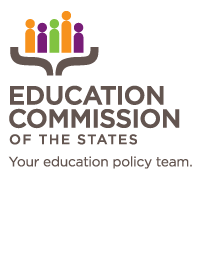Federal COVID-19 relief funds have been a lifeline for early care and education programs, but this funding is temporary. With deadlines approaching, states have an opportunity to push forward policies to support providers, children and families.
Fading Federal Relief
Federal funds have provided support to hundreds of thousands of providers and the families they serve since the start of the pandemic. States have used the funding to cover copayments for families and expand eligibility thresholds so that more families are eligible for subsidy. Stabilization grants have assisted programs with workforce retention and recruitment efforts and helped providers make quality improvements to their programs.
The timeline for spending this funding is moving quickly. Most of the relief funding must be spent by Sept. 30, 2023, and additional Child Care and Development Fund discretionary funding must be spent by September 2024. While some programs will receive stabilization payments throughout the summer, others, like Indiana, have already received their final payments. Maine is continuing these grants using the suppplemental Child Care and Development Fund discretionary funding through May 2023.
Relief funding has stabilized early care and education programs from the worst effects of the pandemic, but it has not permanently solved the myriad issues the sector faces. The sector still encounters systemic challenges that existed before the pandemic and that have been exacerbated and accelerated in its wake.
A recent survey conducted by the National Association for the Education of Young Children (NAEYC) found that 78% of respondents indicated burnout and exhaustion are contributing to challenges retaining qualified teachers. Nearly half of center-based providers indicated they are serving fewer children largely because of staffing shortages, which can lead to longer waitlists, staff taking on multiple roles and classroom closures.
Providers expressed uncertainty about what will happen when relief funds run out. NAEYC’s survey found that:
- One-third of providers receiving stabilization grants indicated they would have closed permanently without the grants.
- Nearly 43% of center directors and 37% of family child care providers said they will be forced to raise tuition for families when the grants expire.
- About 27% of center-based and 29% of family child care providers expect they will have to cut wages when the grants expire.
Without additional state or federal action, the financial burden falls to parents and educators. These compounding issues are setting the table for devastating impacts to the sector.
States Take the Lead
In 2022, states began to make their own investments in child care and early learning, leveraging both federal and state funds. While New Mexico and the District of Columbia have drawn substantial attention, many states are acting to make progress toward increasing early childhood education supply, affordability, quality and compensation. For example:
- Kentucky enacted categorical eligibility for child care educators and staff so they can access child care subsidies for their own children.
- Louisiana appropriated $40 million in state general funds to incentivize cities and parishes (i.e., counties) to invest in the expansion of high-quality early childhood education.
- Maine established a permanent policy with state funds to provide a $200 monthly wage enhancement for child care providers and early childhood educators. This program started off using federal relief funding.
- Nebraska appropriated funds to set child care reimbursement rates at the 75th percentile through fiscal year 2023-24.
Policymaker Considerations
As policymakers engage in their 2023 legislative sessions, they can:
- Inquire about federal relief spending. Reach out to the state’s child care agency or governor’s office to get an update on federal relief funding and how it’s being used.
- Convene relevant community stakeholders to learn about implementation. Learn from providers, families and Child Care Resource and Referral agencies about the funding’s impact and best practices for equitable implementation and distribution.
- Use state funding to invest in child care and early learning policies. Consider making permanent policies enacted with relief funding like expanded subsidy eligibility for families, increased workforce compensation and increased provider reimbursement rates that reflect the true cost of child care.
- Connect with state agencies to support their implementation efforts. Ask about additional needs, whether that is supporting legislation, authorization of existing resources or new resources.
Early care and education programs are a critical part of the education system. So far this year, 21 governors have mentioned early care and education in their State of the State addresses. Though federal funding is important, states play an essential role in elevating and investing in this sector to build strong foundations for all children.




